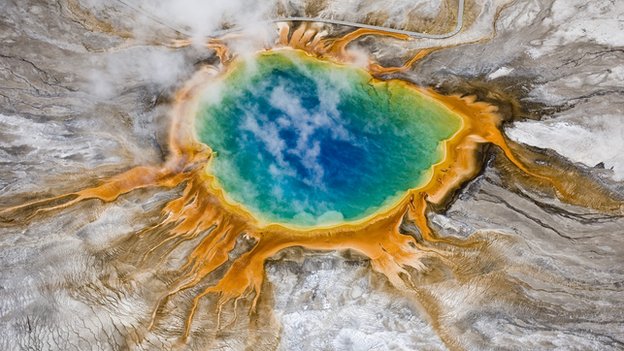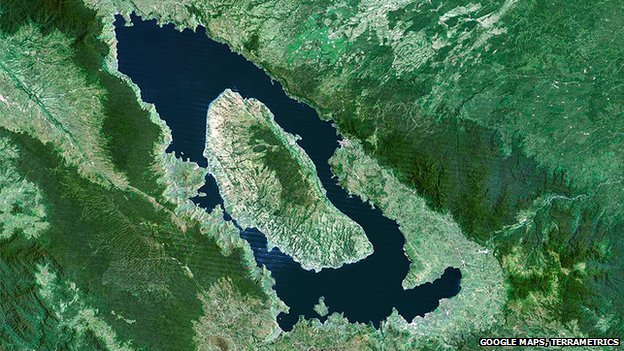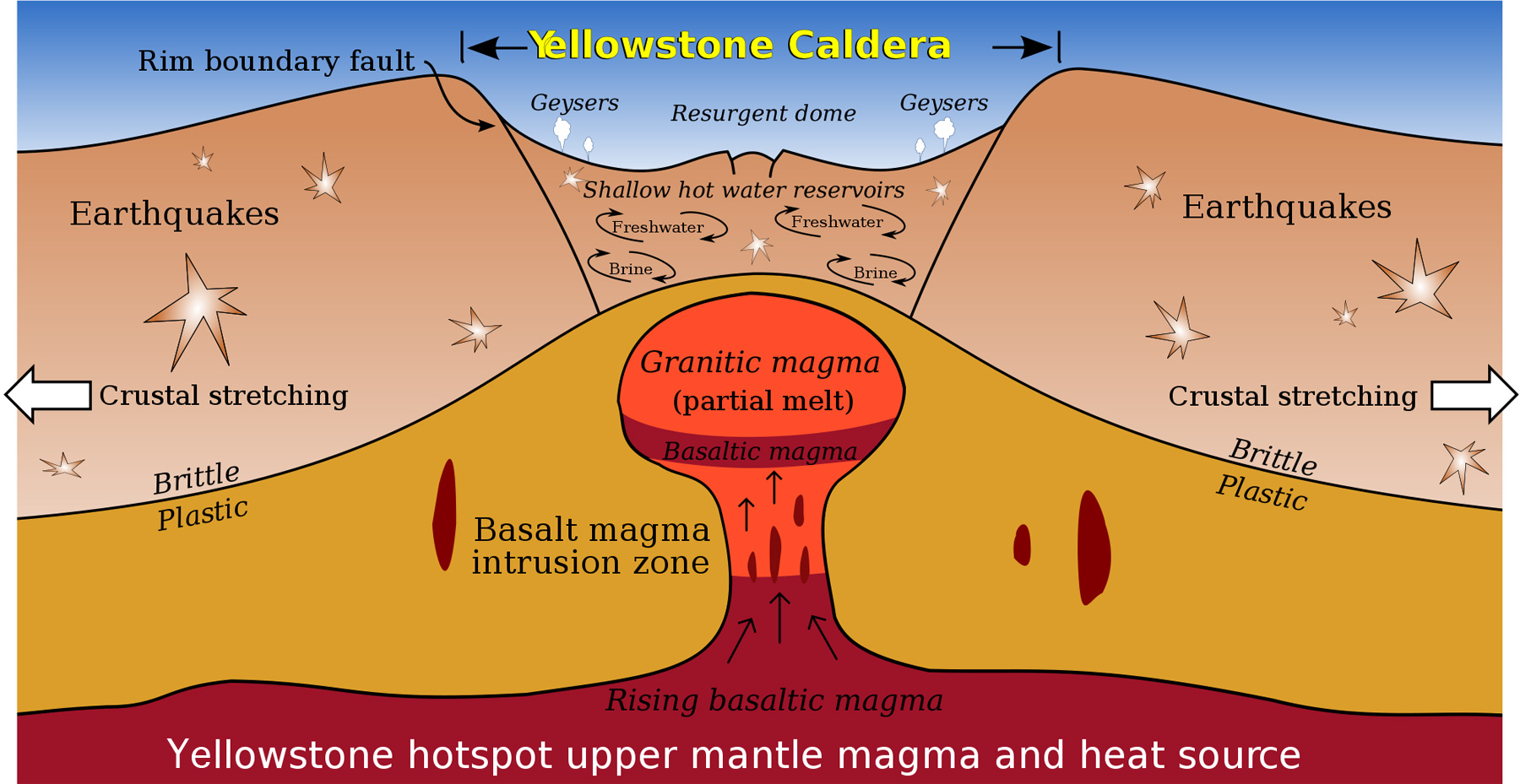According to science reporter James Morgan, writing for BBC News, Science & Environment, “Scientists have made a breakthrough in their efforts to understand what causes so-called supervolcanoes to erupt” (“Supervolcano eruption mystery solved”):
Supervolcanoes are capable of eruptions thousands of times larger than normal outpourings. It was thought that an external trigger, such as an earthquake, was needed to bring about a giant blast. But tests at the European Synchrotron Radiation Facility in Grenoble show the sheer volume of liquid magma is enough to cause a catastrophic super-eruption. Details of the research by a Swiss team appear in Nature Geoscience.
Simulating the intense heat and pressure inside these “sleeping giants” could help predict a future disaster. Lead author Wim Malfait, of ETH Zurich, said: “We knew the clock was ticking, but we didn’t know how fast: what would it take to trigger a super-eruption? Now we know you don’t need any extra factor – a supervolcano can erupt due to its enormous size alone. Once you get enough melt, you can start an eruption just like that.”
There are about 20 known supervolcanoes on Earth – including Lake Toba in Indonesia, Lake Taupo in New Zealand, and the somewhat smaller Phlegraean Fields near Naples, Italy. Super-eruptions occur rarely – only once every 100,000 years on average. But when they do occur, they have a devastating impact on Earth’s climate and ecology.
When a supervolcano erupted 600,000 years ago in Wyoming, in what today is Yellowstone National Park, it ejected more than 1,000 cubic km of ash and lava into the atmosphere – enough to bury a large city to a depth of a few kilometers. This ejection was 100 times bigger than Mt Pinatubo in the Philippines in 1992 and dwarfs even historic eruptions like Krakatoa (1883).
“This is something that, as a species, we will eventually have to deal with. It will happen in future,” said Dr Malfait. “You could compare it to an asteroid impact – the risk at any given time is small, but when it happens, the consequences will be catastrophic.” Being able to predict such a catastrophe is obviously critical. But the trigger has remained elusive – because the process is different from conventional volcanoes like Pinatubo and Mt St Helens.
One possible mechanism was thought to be the overpressure in the magma chamber generated by differences between the less dense molten magma and more dense rock surrounding it. “The effect is comparable to holding a football under water. When you release it, the air-filled ball is forced upwards by the denser water around it,” said Wim Malfait, of ETH Zurich. But whether this buoyancy effect alone was enough was not known. It could be that an additional trigger – such as a sudden injection of magma, an infusion of water vapor, or an earthquake – was required.
To simulate the intense pressure and heat in the caldera of a supervolcano, the researchers visited ESRF in Grenoble, where they used an experimental station called the high pressure beamline. They loaded synthetic magma into a diamond capsule and fired high-energy X-rays inside – to probe for changes as the mixture reached critically high pressures. “If we measure the density difference from solid to liquid magma we can calculate the pressure needed to provoke a spontaneous eruption,” Mohamed Mezouar, an ESRF scientist, told BBC News. “To recreate the conditions in the Earth’s crust is no trivial matter, but with the right vessel we can keep the liquid magma stable up to 1,700C and 36,000 atmospheres.”
The experiment showed that the transition from solid to liquid magma creates a pressure which can crack more than 10 kilometers of Earth’s crust above the volcano chamber. “Magma penetrating into the cracks will eventually reach the Earth’s surface. And as it rises, it will expand violently – causing an explosion,” said Carmen Sanchez-Valle, also of ETH Zurich.
But if Yellowstone happened to be on the brink of an eruption, the good news is that we will still see a warning, Dr Malfait told BBC News. “The ground would probably rise hundreds of meters – a lot more than it does now.” We think Yellowstone currently has 10-30% partial melt, and for the overpressure to be high enough to erupt would take about 50%” (read the complete article here).







